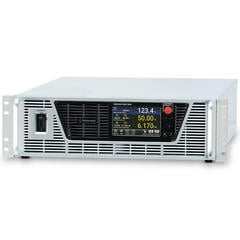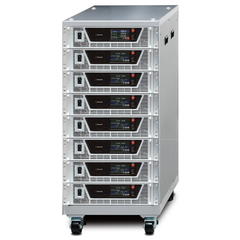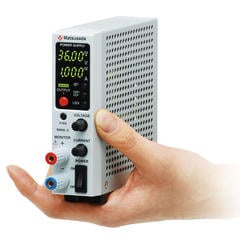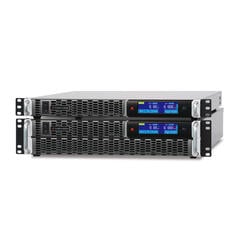Grid Connection is Familiar to Us
Do you know that there was a "switch" until about the 1980s in the case that you buy home appliances, especially when you connect lighting equipment to an outlet in Japan? This switch was for switching the frequency of the alternating current. The frequency of the exchange is different in East Japan and West Japan. Recently, many people don't know because it has become to be switched automatically. Since 50 Hz in East Japan and 60 Hz in West Japan are used, it isn't possible to transmit and receive power with each other as it is.
Specifically, Chubu Electric Power is transmitting at 60 Hz, but Tokyo Electric Power is transmitting at 50 Hz. If you are going to exchange power between these power companies, you need to convert the frequency. Currently, the Shin-Shinano frequency conversion facility, Sakuma frequency conversion facility, and Higashi-Shimizu electric power substation are connected at three locations where substation facilities are installed. This is also a kind of grid connection.
Naturally, old appliances cannot be connected as they are, and when moving from East Japan to West Japan or vice versa, it is necessary to switch the frequency of alternating current by a switch. However, as this is bothersome, as we mentioned earlier, recent home appliances are switched automatically. A grid connection refers to a state in which each system with different types of power supply such as voltage, AC, DC, etc., is operated in parallel for the purpose of interchange of power between two or more power systems. It works on different power transmission lines, so when connecting it, a specific conversion process is required.
In the familiar example, some homes have residential photovoltaic systems installed. In this case, many households will charge the battery while using the generated electricity during the daytime and then sell surplus power to the power company. Conversely, if it becomes impossible to generate electricity at night, the lighting and electronic devices are operated by the storage battery and the power supply from the power company. While solar panels and power cells are basically DC power sources, power companies' systems are AC power sources, so they are different systems.

Taking out only the power generation part of the upper figure and making it on a large scale, it becomes the connection from the Mega Solar power plant to the power transmission line owned by the power company. At Mega Solar power plant, the solar inverter (power inverter) will charge the battery (although it may not), then adjust the output to a certain level and send the electricity to the grid. In this case, it is necessary to convert DC to AC at the same time as adjusting the voltage.
In the case of grid interconnection, voltage transformation, and DC/AC conversion is required. The technology used for the bi-directional power supply introduced in the last column will be useful. In other words, the grid of the transmission line of the power company comes by alternating current. It is at a voltage of 100 V or 200 V, and household electronics are designed to operate at this voltage. On the other hand, solar cell modules and storage batteries come in direct current, but they cannot be used at home as they are. It is necessary to boost it to 100 V or 200 V and then make it AC. This is just what the bi-directional power supply does.
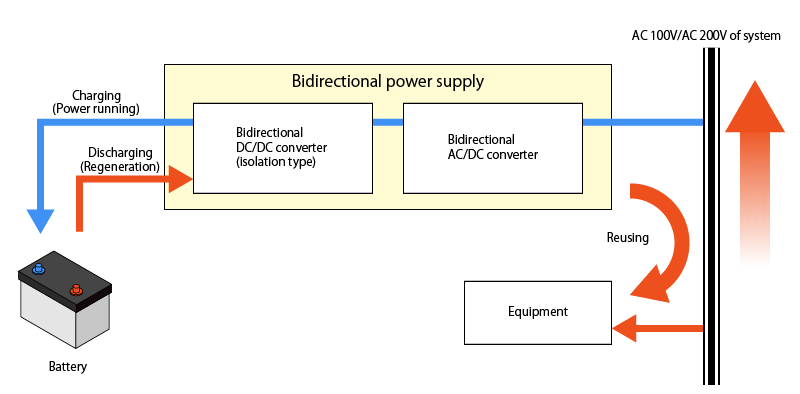
Grid Connection Mechanism
So, what is the important part of grid connection? Let's take a residential photovoltaic system as an example.
A "Solar inverter" is required to connect to the power system of a power company. This is a kind of inverter, and it draws the direct current generated by the solar cell module, adjusts the phase and voltage to an alternating current suitable for the system converts it into alternating current, converts it, and then feeds it into the system. It consists of this inverter (DC/AC conversion device) and a grid connection protection device.
The inverter is equipped with a device with maximum power point tracking (MPPT), harmonic suppression, and reverse flow control. The inverter changes DC power to the same level of power as grid power and supplies power to grid-connected home appliances. For surplus power, reverse power is sent to the grid side.
On the other hand, the interconnection protection device is necessary to connect the power supply to a stable state. Solar power generation depends on the weather. If a certain amount of power cannot be supplied due to unseasonable weather or a system problem, or if the conditions for power generation are too good to supply a large amount of electricity, these will appear as abnormal voltage fluctuations. Since this voltage fluctuation will be a load on the grid, in the case of grid interconnection, there are installed an automatic voltage regulator that regulates the voltage and the stabilization of the amount of power supply by sandwiching the storage battery. In some cases, if there is a problem on the grid side, it also has a function to minimize damage to the photovoltaic system. In other cases, it is also necessary to have a mechanism to perform "disconnection" to separate from the grid connection. These are the roles played by the grid connection protector. The solar inverter incorporates not only conversion from direct current to alternating current but also the mechanism necessary for the stabilization of these power supplies.
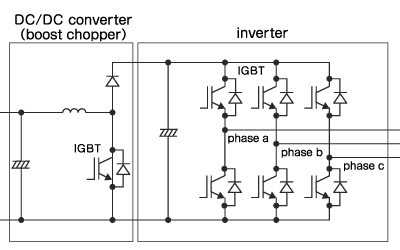
In October 2018, Kyushu Electric Power requested that the power producers curb their output because the temperature does not rise and the demand for electricity is small while the amount of power generation by solar power generation increases in fine weather. Not only solar power generation at home but also mega solar is required to build a system for securing a stable power supply.
Grid Interconnection in the Era of Power Semiconductors
You can see that in grid connection, stabilization of power supply voltage is important. This stabilized power supply, especially its function as a DC power supply, is very important for operating electronic devices. Electronic devices are basically operated from DC power sources, ranging from 12 V for vehicles to home appliances.
AC is converted to DC by an AC/DC converter consisting of a transformer, a rectifier circuit, and a smoothing circuit and is further converted to a DC voltage required by a DC/DC converter. Since semiconductors and circuits built into electronic devices require different voltages, connecting different voltage sources may cause an overcurrent to burn the circuit. Conversely, if the required voltage is higher than the supply voltage, the voltage may become unstable, and the electronic device may be destroyed. In this case, the breaker operates in the home, and both the circuit of the electronic device and the power supply system are protected by forcibly disconnecting from the grid connection.
In addition, grid connection requires "conversion of AC and DC" and "conversion of voltage." Since the 1990s, the development of power semiconductors, commonly known as "power semiconductors," has been underway to do these efficiently. Until now, manufacturers have made circuits by combining various parts, but these have been replaced by semiconductors that can handle high voltages and large currents. In particular, a large amount of power is used to generate heat, which may cause a failure. Therefore, it is necessary to reduce the power loss of the power semiconductor itself, which is the cause of heat generation, or to efficiently dissipate the generated heat. The development of materials such as silicon carbide (SiC) and gallium nitride (GaN) has led to higher performance.
In the next column, we introduce the four functions of power semiconductors: "convert direct current to alternating current," "convert alternating current to direct current," "change the period of alternating current," and "convert direct current voltage," from converting alternating current to stable direct current voltage.
Related Technical Articles
Recommended products
Matsusada Precision's products for electric power solution
Reference (Japanese site)
- Japanese source page 「イチから学ぶ系統連系」
(https://www.matsusada.co.jp/column/column-system_connection.html) - 双方向DC-DCコンバータと蓄電システムの協調によるスマートなパワーシステム
(https://product.tdk.com/ja/techlibrary/applicationnote/power-system_bidirect-converter.html) - 電気が伝わる経路(電気事業連合会)
(https://www.fepc.or.jp/enterprise/souden/keiro/) - 系統連系とは(電気設備の知識と技術)
(https://electric-facilities.jp/denki2/keitou.html) - 電力品質確保に係る系統連系技術要件ガイドライン
https://www.enecho.meti.go.jp/category/electricity_and_gas/electric/summary/regulations/pdf/keito_guideline.pdf - 九州「太陽光で発電しすぎ問題」とは何なのか
(https://toyokeizai.net/articles/-/244405) - 東京電力と中部電力が連系能力を90万kW増強へ、「重要送電設備」の第1号に
(https://www.itmedia.co.jp/smartjapan/articles/1408/26/news033.html) - 「太陽光・風力発電と系統連系技術」甲斐隆章、藤本敏朗著 オーム社刊, 2010年
(https://www.ohmsha.co.jp/book/9784274505423/) - 「トコトンやさしい電源回路の本」相良岩男著 日刊工業新聞社刊, 2014年
(https://pub.nikkan.co.jp/book/b10021025.html) - 「直流送電工学」町田武彦編著 東京電機大学出版局, 1999年
(https://www.tdupress.jp/book/b348906.html) - 太陽光発電系統連系インバータ
https://www.chademo.com/wp/pdf/japan/seibi13kec1.pdf - MPPT方式(太陽光発電の仕組み)
http://www.solartech.jp/charge_ctrl/mppt.html



